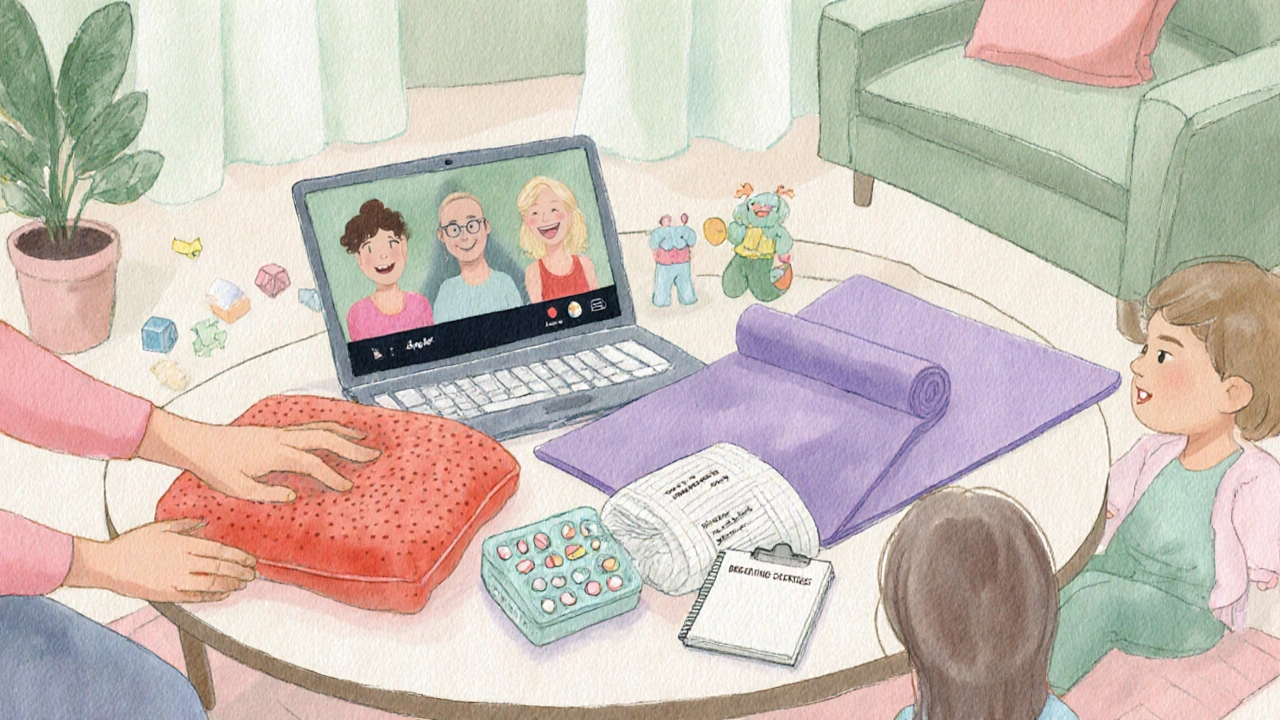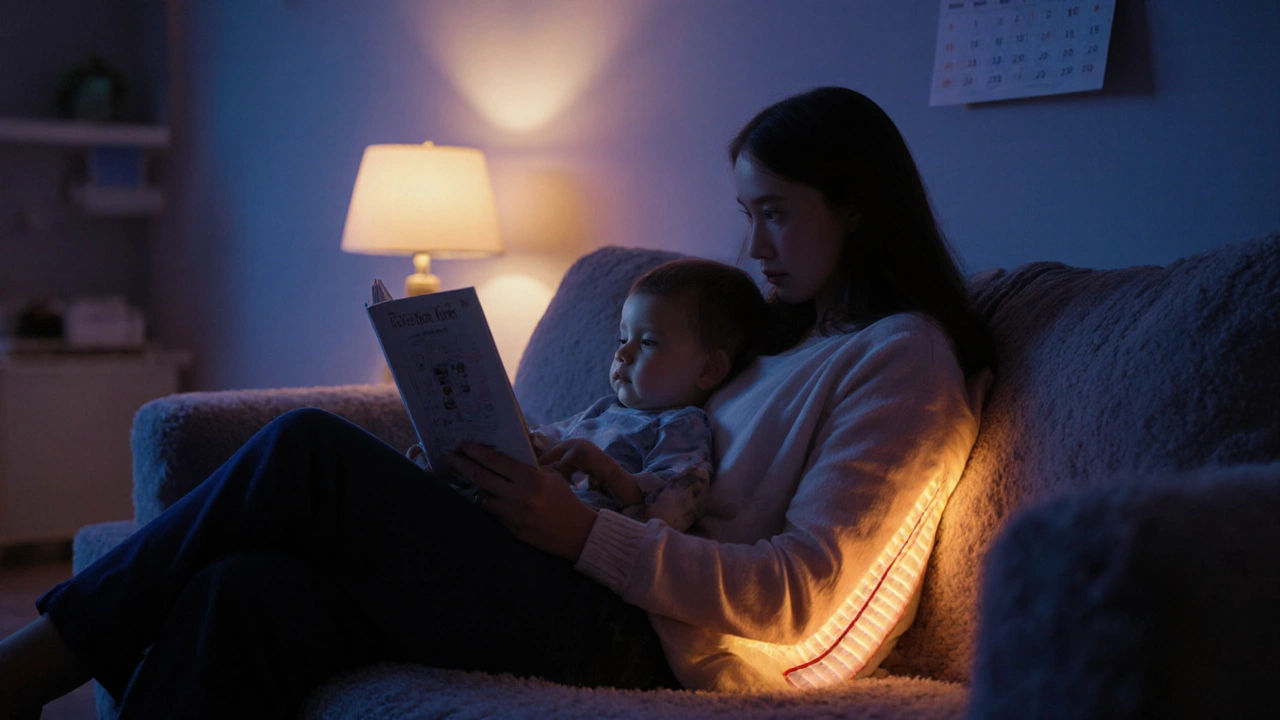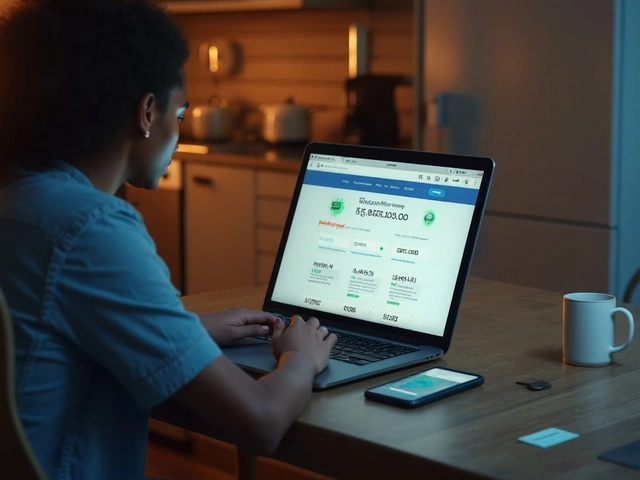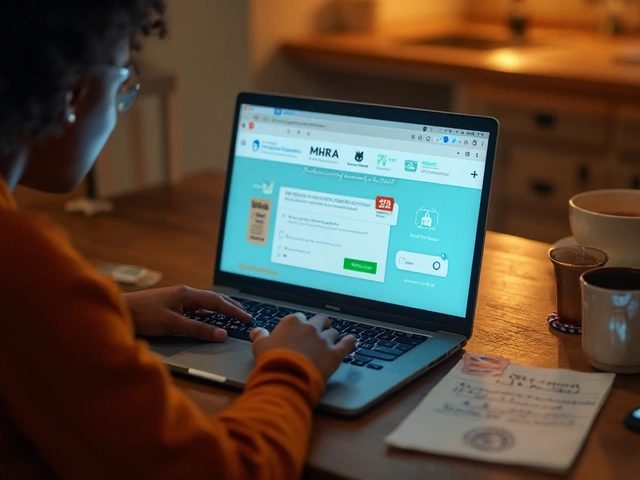Endometriosis Pain Tracker & Management Guide
| Date | Pain Level | Activity | Notes |
|---|---|---|---|
| No entries yet. Track your pain to start logging. | |||
Juggling bedtime stories, school projects, and a grocery list is hard enough-add endometriosis parenting into the mix and the challenge spikes. When the body refuses to cooperate, you can still keep the family ship afloat. This guide shows how to recognize the pain signals, craft a realistic routine, and lean on the right support so that chronic pain doesn’t dictate family life.
Quick Takeaways
- Track pain patterns and match them with daily tasks.
- Build a flexible routine that includes short rest bursts.
- Communicate openly with partners, kids, and health providers.
- Use a pain‑management toolkit: heat packs, gentle yoga, medication timing.
- Tap into community support-online groups, local meet‑ups, therapist.
Understanding the Condition
Endometriosis is a chronic gynecological disease where tissue similar to the uterine lining grows outside the uterus, causing inflammation and scar tissue. It affects roughly 1 in 10 women of reproductive age and often shows up as pelvic pain, heavy periods, or fatigue.
Because the misplaced tissue responds to hormonal cycles, many women experience chronic pain that waxes and wanes throughout the month. This pain can be sharp during periods, dull on off‑days, and sometimes radiates to the lower back or thighs.
When you add the role of parenting, the stakes feel higher. Little ones don’t wait for you to feel better, and missed school runs or bedtime rituals can quickly snowball into guilt and stress.
How Pain Shows Up in Daily Parenting
Consider a typical weekday: you’re up at 6am, making breakfast while your toddler is still clinging to the high chair. A flare‑up can turn that simple task into a marathon of grimacing and stretching. Later, when you’re helping with homework, a sudden stabbing pain can make it impossible to focus on math problems.
Real stories illustrate the impact:
- Amy, 34, mother of two: "During my period, the pain made lifting my son’s backpack feel like I was carrying a bucket of bricks. I started using a stroller instead, even for short trips, and it saved my back and my sanity."
- Jenna, 29, single parent: "I set a timer for each chore. When the timer rang, I’d pause, do a quick 5‑minute stretch, and then move on. The breaks kept the pain from building up."
These tweaks might seem minor, but they prevent a bad day from spiraling into a week of missed appointments and endless apologies.
Building a Pain‑Management Toolkit
Think of your toolkit as a Swiss army knife-each tool solves a specific problem. Below is a handy table that outlines common tools, what they address, and how to integrate them into a parenting schedule.
| Tool | Primary Use | How to Implement |
|---|---|---|
| Heat Pack | Reduce muscle tension | Apply 15min while kids nap or watch TV |
| Prescription/OTC Medication | Control inflammation and pain spikes | Set alarms for dosage; keep a pill organizer by the kitchen sink |
| Gentle Yoga or Stretch | Improve flexibility and blood flow | 5‑minute morning routine; use a kid‑friendly video |
| Mindful Breathing | Lower stress‑induced pain | 3‑minute practice before bedtime stories |
| Support Group | Share coping strategies, reduce isolation | Attend monthly virtual meet‑up; bring a notebook for ideas |
Every tool should be tested during a low‑pain day first, so you know how it feels when the flare‑up hits.

Communicating with Your Family and Care Team
Transparency prevents misunderstandings. Sit down with your partner and older kids when you’re feeling relatively well. Explain that the pain isn’t “just a bad day” but a medical condition that can limit your stamina.
When you involve health professionals, specific terms help. Mention that you’re dealing with hormonal therapy options, such as GnRH agonists or progestin‑only pills, and discuss how they might affect your energy levels.
For younger children, keep explanations simple: “Mommy sometimes has a tummy ache that makes it hard to move fast. If you see me sitting down, it’s because I need a quick rest.”
Don’t forget the pediatrician if your kids have health concerns that intersect with your condition, such as needing extra help with schoolwork when you’re exhausted.
Scheduling and Routine Hacks
Structure is the antidote to chaos. Use a shared digital calendar (Google Calendar or a family app) and color‑code “high‑energy” tasks versus “low‑energy” tasks. Slot mandatory activities like doctor appointments during your peak energy window-often mid‑morning for many women with endometriosis.
Batch similar chores together. If you need to do laundry, fold, and kitchen clean‑up, do them back‑to‑back and then reward yourself with a 10‑minute rest. The key is to avoid “task switching,” which can magnify pain.
Prepare a “grab‑and‑go” kit for mornings: pre‑portioned snacks, a water bottle, extra diapers, and a small heat pack. The fewer decisions you make while in pain, the smoother the day runs.
Self‑Care and Mental Health
The emotional toll of chronic pain is real. Women with endometriosis report higher rates of anxiety and depression. Integrate mental‑health practices into your routine, even if it’s just a 5‑minute journal entry before bed.
Mindfulness apps (Headspace, Insight Timer) often have short “body scan” meditations that can help you notice pain without immediately tensing up. Pair this with a brief walk-fresh air can lower cortisol and ease pelvic discomfort.
Consider therapy specialized for chronic‑illness patients. Cognitive‑behavioral therapy (CBT) has been shown to reduce pain‑related distress by up to 30% in clinical studies.
When to Seek Professional Help
If pain interferes with daily functioning more than three days a week, it’s time to revisit your doctor. Ask about fertility preservation options if you haven’t already-surgical removal of endometrial lesions can improve both pain and future pregnancy chances.
Discuss escalation to stronger hormonal therapy if NSAIDs no longer suffice. Some women find relief with a levonorgestrel IUD, while others need a full‑cycle hormonal suppressor.
Never ignore red‑flag symptoms: sudden severe abdominal pain, fever, or unexplained weight loss. These could indicate an ovarian cyst rupture or infection that requires urgent care.
Resources and Next Steps
Start with one small action today:
- Print a simple pain‑tracking sheet and record your symptoms for one week.
- Join an online support group-the Endometriosis Association offers free webinars.
- Schedule a 15‑minute tele‑visit with your gynecologist to review medication timing.
Remember, you’re not alone. Millions of parents navigate chronic pain while keeping the family moving forward. With the right toolkit, open communication, and realistic routines, you can turn “pain‑controlled” days into “family‑thriving” days.

Frequently Asked Questions
Can I still breastfeed if I’m on hormonal therapy for endometriosis?
Some hormonal treatments, like GnRH agonists, are not compatible with breastfeeding because they suppress milk production. Progestin‑only pills are generally considered safe, but always confirm with your OB‑GYN and pediatrician before starting any medication while nursing.
How do I explain endometriosis to a preschooler?
Use simple language: “Mommy sometimes has a tummy that hurts a lot, so I need to sit down and rest for a little while.” Emphasize that it’s not contagious and that you’re still there for them.
What quick pain‑relief tricks work when I’m in the middle of a bedtime routine?
Keep a small heating pad in the bedroom. While reading a story, place it on your lower back for 5‑10 minutes. Pair with deep‑breathing: inhale for four counts, hold two, exhale four.
Is it safe to do yoga during a flare‑up?
Gentle, restorative yoga poses (Child’s Pose, Supine Twist) are usually safe and can improve circulation. Avoid deep bends or intense core work on high‑pain days, as they may worsen discomfort.
How often should I see my doctor about endometriosis?
If symptoms are stable, a bi‑annual check‑in is typical. Increase frequency if pain spikes, fertility plans change, or new symptoms appear.






Maintaining a systematic record of pain intensity is essential for any parent navigating endometriosis, as it provides objective data that can be communicated to health professionals.
October 3By logging the exact time, activity, and pain level, one can discern patterns that might otherwise be overlooked amid daily chaos.
Such a log enables the practitioner to tailor hormonal or analgesic regimens more precisely, thereby reducing unnecessary medication.
Moreover, it empowers the individual to anticipate flare‑ups and arrange low‑impact tasks during peak discomfort periods.
Consistent tracking also offers psychological reassurance, confirming that the pain is not imagined but quantifiable.
The guide’s suggestion to use a digital spreadsheet or printable chart aligns well with modern parenting workflows.
Integrating this habit into a morning routine-perhaps while preparing breakfast-ensures compliance without additional burden.
Families benefit when the parent shares de‑identified insights with the support group, fostering communal learning.
In addition, pairing pain spikes with dietary inputs may reveal food sensitivities that exacerbate symptoms.
When a child observes the parent’s disciplined approach, it models resilience and proactive health management.
It is advisable to review the compiled data with a specialist at least bi‑annually to adjust therapeutic strategies.
Utilising color‑coded indicators for mild, moderate, and severe pain can make the log visually intuitive.
Such visual cues assist in rapid decision‑making during emergencies, for instance, when a severe episode coincides with a school pickup.
Documenting accompanying symptoms such as fatigue or gastrointestinal disturbance enriches the clinical picture.
Finally, the act of writing down experiences can serve as a therapeutic outlet, reducing the emotional burden of chronic illness.
In sum, a rigorous pain‑tracking regimen is not merely an administrative task but a cornerstone of effective endometriosis management for parents.
Abdul Adeeb